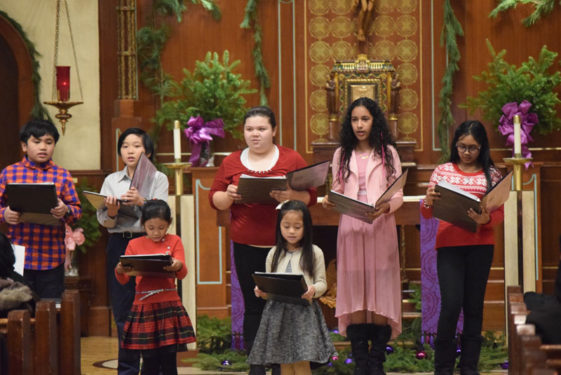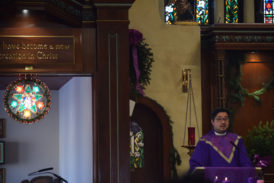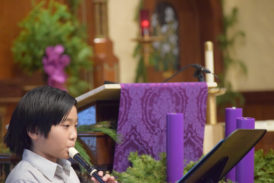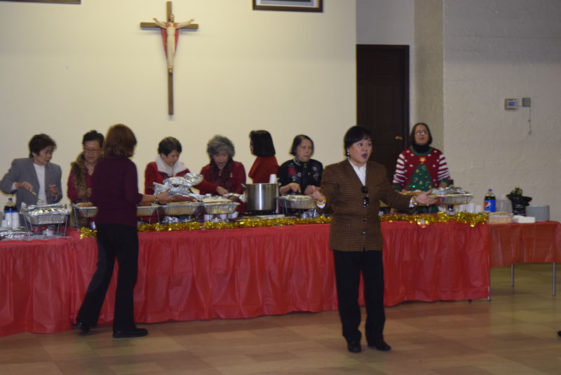
The Filipino community at Incarnation parish, Queens Village, opened the church doors in the early afternoon Dec. 10 as they celebrated one of the most long-standing Christmas traditions in the Philippines known as Simbang Gabi. Although translated in English as Mass at Dawn, the Queens Village observances were held in the afternoons.
Father Patrick Longalong, coordinator of the diocesan Filipino ministry, celebrated the liturgy with the Filipino Catholics.

“Our culture has a lot to offer in terms of having faith, staying joyful in midst of challenging situations,” said Father Longalong.
“We also have experienced a lot of devastations in the Philippines – typhoons, volcanic eruptions and everything, but even though we have gone through all that, we’ve still managed to stay positive and joyful and faithful and hopeful.”
In its essence, Simbang Gabi consists of nine mornings when Filipino Catholics gather in the pre-dawn hours as early as 4 a.m. for a novena of Masses anticipating the celebration of Christmas, with the final Mass at midnight on Christmas Eve.
The Simbang Gabi tradition began when the Spanish conquistadors who colonized the Pacific Island for hundreds of years passed along this cultural tradition. The Spaniards held Masses in December for field laborers that were called Misas de Gallo. While the tradition dissipated in Spain, the practice continued amongst Filipinos.
Cora Atienza has attended the Simbang Gabi celebrations since they began at Incarnation seven years ago.
“It brings back memories from back home,” said Atienza. “You know, it’s really fun to see all Filipinos with the Simbang Gabi tradition even though it happens during the day.”
Joining her was her son, Addy Atienza, who grew up attending the Queens Village parish.
“It’s good to know that there is still a good Filipino core in this community and that it’s important to pass this down from different generations as a lot of people get older, you got to make sure that you keep the celebration going every year,” he said.

After Mass, the celebration continued with the younger members performing for the community, singing Christmas carols, playing musical instruments and showcasing their talents. The faithful came alive when traditional Christmas songs in Tagalog, the native language, started to play.
What’s a Filipino tradition without dancing and food, as the final bow from the young performers took place, the community gathered downstairs, led by the scent of staple dishes from the motherland – rice cake bibingka, cassava, to Chicken Adobo and pancit noodles.
Blessing the food was Lynn Eclipse, who helped coordinate the Simbang Gabi event since it began at the parish. Her desire to share her culture and faith captivates why she spearheaded the event in the first place.

“I cannot exchange my Philippines culture wherever I go, I love it,” said Eclipse. “I am proud of my own culture, I’m proud of my own country.”
The fellowship, which included synchronized line dancing and conversations of the Advent season, symbolized the community’s gratitude for the years that they can continue to share their rich culture and the Catholic faith.














